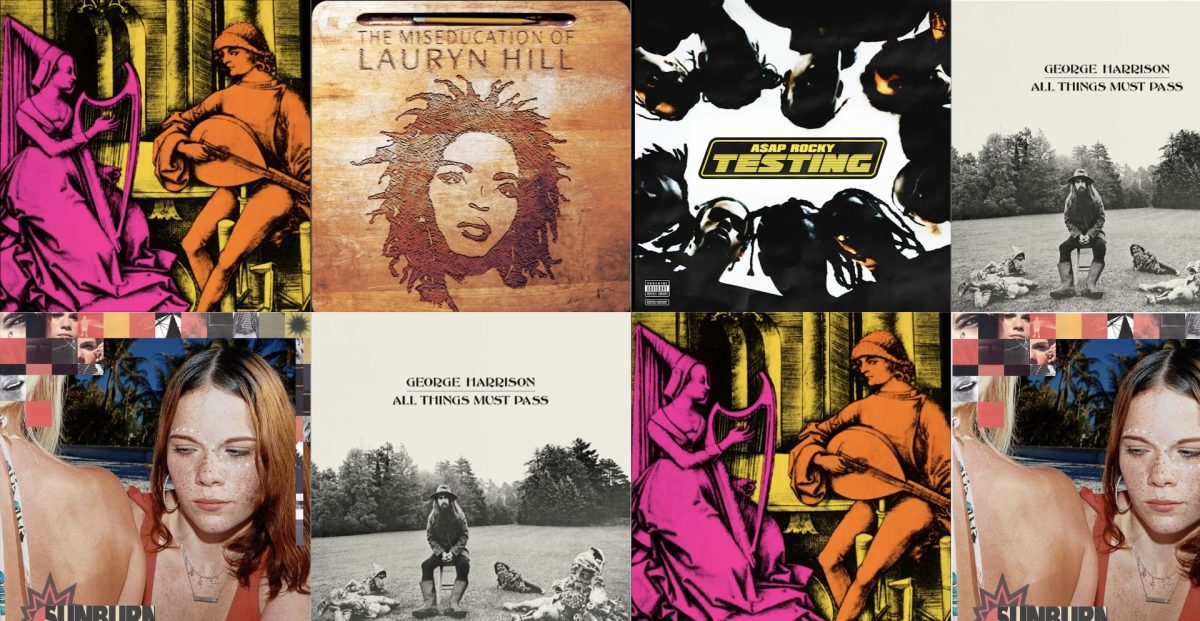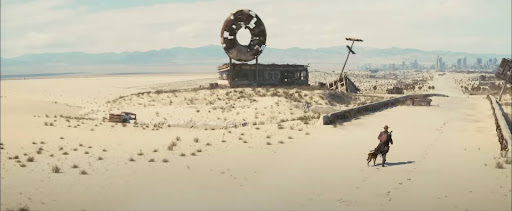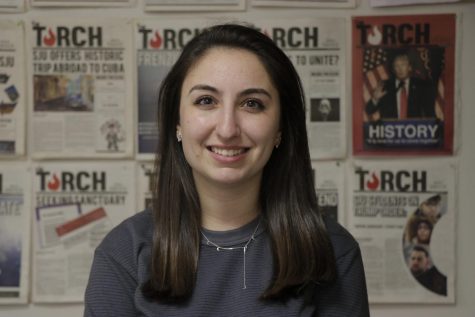Within the tranquil, white-walled room of the Dr. M. T. Geoffrey Yeh Art Gallery, located in Sun Yat Sen Hall, the first event held for the exhibition “Mexico at the Hour of Combat: Sabino Osuna’s Photographs of the Mexican Revolution” took place on Thursday, Sept. 29 at 5 p.m.
The first of nine presentations was called “Photographic Documentation & Revolutionary Ideas,” presented by St. John’s University alum and current Photo Editor for TIME Magazine, Paul Moakley.
Moakley graduated from St. John’s in 1998 as an English major and Photography minor and now works on special news projects with TIME. He came to present at the exhibition to discuss revolutionary photography in history and also to give a sneak peek of a project he and other colleagues are working on regarding the same topic.
“Having a skill is important and photography is about taking the world in and that’s why I love it and the ways we communicate through photos,” stated Moakley during his discussion, relating revolutionary photography to the photography of the Mexican Revolution.
Moakley’s presentation, projected onto a screen in the gallery room, began with “the firsts” of photography. He discussed the first photo ever captured, “View from the Window at Le Gras” by Nicéphore Niépce in 1826 in Saint-Loup-de-Varennes, France. The photo depicts buildings and the countryside in blotchy black and white ink. The original photo is displayed in the main lobby of the Harry Ransom Humanities Research Center in Austin, Texas.
Another “first photo” shown was the first cell image taken by new father Philippe Khan in 1997 in Santa Cruz, Calif., the day of his daughter Sophie’s birth. Khan then wirelessly transmitted the picture to more than 2,000 people around the world.
The main discussion Moakley was working towards was his list of the most revolutionary photos in history, decided on by himself and his colleagues. The photos chosen were not all meant to be aesthetically pleasing or beautiful, but graphic, heavy images that would make an impact on any viewer. These photos were able to tell a story that would be remembered long after they were captured. Along with each photo presented and then broken down, Moakley played a short video created by his fellow TIME photo collaborators.
“The photo of Emmett Till was my favorite because it had such a large impact on the people of the time. Although it was something so painful, it brought awareness to an issue that the country was facing,” said sophomore Alicia Guzman. “It was really cool to see how photography can have such a large impact on our society. As a Government and Politics major it was really eye opening to see the political power that pictures can have and how that motivates people to take action.”
Emmett Till was an African-American boy murdered in 1955 at the age of 14 in Money, Mississippi by the husband and half-brother of the white woman he allegedly whistled at. He was beaten and mutilated yet his mother chose to do an open casket the day of his wake to show the brutal and unjust death of her son. The photo was taken by David Jackson.
“Out of the images that he showed I think the most important are the ones that had the biggest impact on me was the images of Emmett Till and the tank man from Tiananmen because I think that most people think of photography as art, but these were documentary photographs that portrayed events that were so heartbreaking but also showed us really important things that made people want to revolutionize and change certain social and political issues which I think is a really important thing that art can do,” stated junior History major and Art minor Marilyn Fabiola.
“Tank Man” captured by Jeff Widener in 1989 shows a protester approach the tanks in Beijing, China and has become an iconic photo of the man who represented the other Chinese protesters in the square.
Freshman Photography major Stefanie Perrote shared her favorite photo from the presentation, “My favorite picture would have to be the one of the man dying of AIDS. I feel like it brings real awareness to the disease and what it did to the community bringing all those people together really was inspiring to myself as a photography major.”
The photo taken by Therese Frare in the Pater Noster House, an AIDS Hospice, in Columbus, Ohio called, “The Face of AIDS” embodies the horror of the fatal illness and sadness from the time of the crisis.
Other revolutionary photos Moakley presented included “Milk Drop Coronet” by Harold Edgerton in 1957, “Earthrise” by William Anders in 1968 and “Untitled (Cowboy)” by Richard Prince in 1989.
The exhibition “Mexico at the Hour of Combat” will stay open to the public until Nov. 17 and host more presentations through the Departments of Sociology and Anthropology, Art and Design, Center for Latin American and Caribbean Studies and the Women and Gender Studies Program. More information can be found in Sun Yat Sen Hall.
















